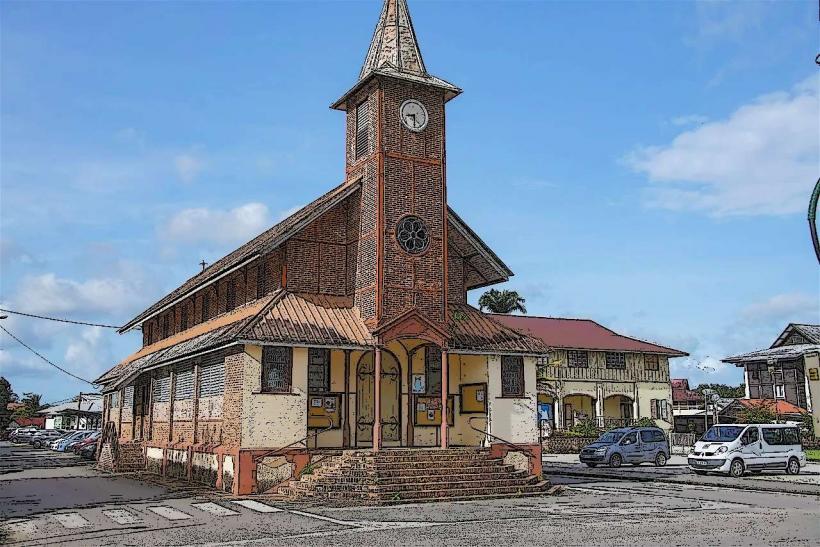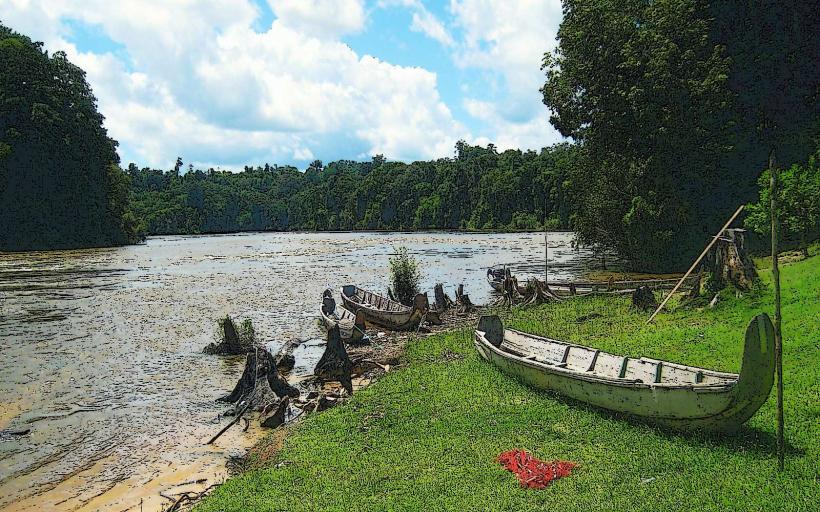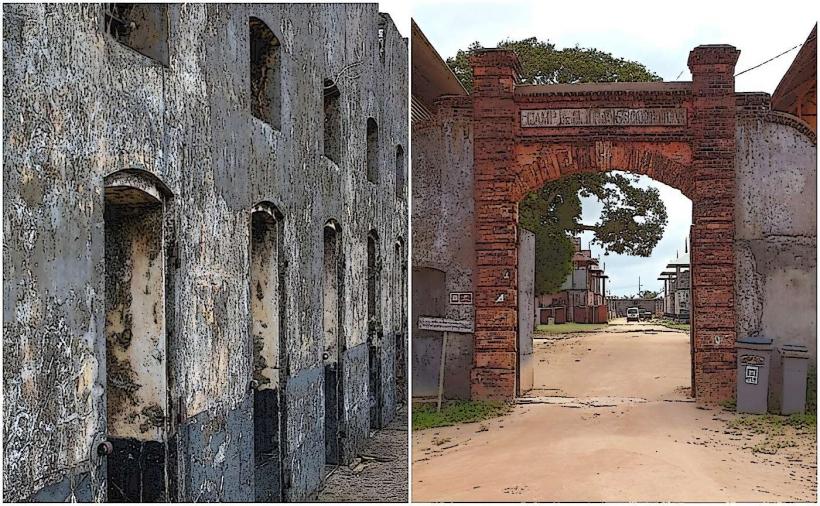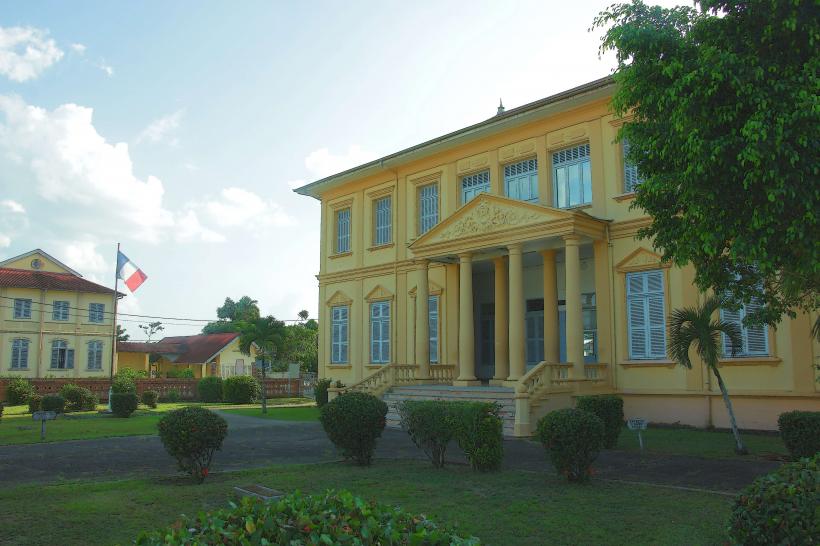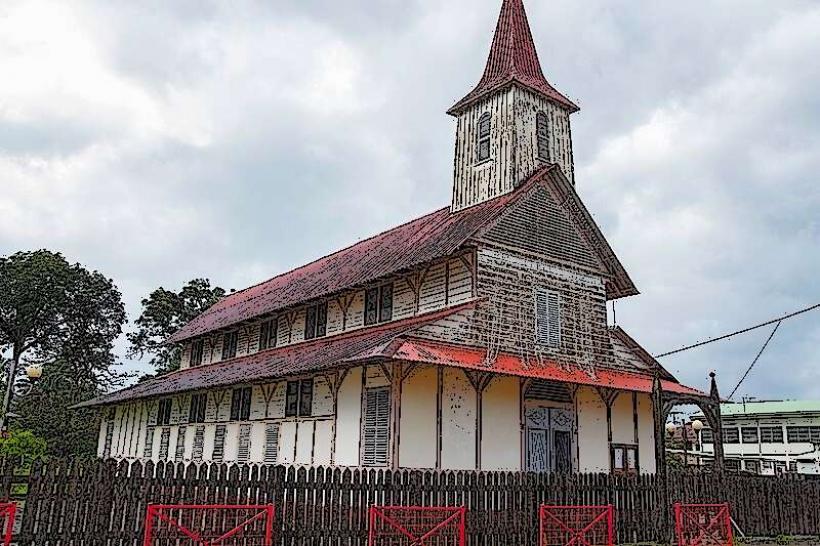Information
Landmark: Forest of Saint-LaurentCity: Saint Laurent du Maroni
Country: French Guiana
Continent: South America
The Forest of Saint-Laurent (French: Forêt de Saint-Laurent) is a large area of tropical rainforest located in the region around Saint-Laurent-du-Maroni, a town in French Guiana. This forest is part of the vast and ecologically rich Amazon Basin and plays an important role in both the natural environment and the cultural heritage of the area.
Geographic Features
- Location: The Forest of Saint-Laurent is situated near the town of Saint-Laurent-du-Maroni, which is on the Maroni River close to the border with Suriname. The forest is part of the larger Amazon Rainforest ecosystem, which spans several countries in South America.
- Size: This forest area is extensive, covering a significant portion of the landscape surrounding Saint-Laurent-du-Maroni, and is characterized by dense tropical vegetation, wetlands, and diverse ecosystems. It is one of the last remaining large stretches of primary rainforest in French Guiana.
Ecological Significance
- Biodiversity: The Forest of Saint-Laurent is part of the rich and diverse ecological tapestry of the Amazon Rainforest. It is home to a wide variety of flora and fauna, including rare species of plants, animals, and insects. The forest provides crucial habitats for both common and endangered species, making it a key area for biodiversity conservation.
- The area is inhabited by various primates, reptiles, amphibians, and a wide range of bird species, some of which are unique to the region.
- The forest also contains numerous species of tropical hardwood trees and plants, many of which have not been fully documented or studied.
- Waterways: The forest is interspersed with rivers and creeks, including the Maroni River, which flows through the region. These waterways are vital for the local ecosystem, providing water for plants and animals and playing a role in the migration of species.
Human Influence and Cultural Significance
- Indigenous Communities: The forest is home to several indigenous communities, including the Wayampi and Wayana peoples, who have lived in the area for centuries. These communities rely on the forest for sustenance, medicine, and cultural practices. They practice hunting, fishing, and agriculture and have a deep spiritual connection to the land and forest.
- Indigenous knowledge of the flora and fauna in the forest is invaluable, particularly for the medicinal and practical uses of the plants and natural resources found in the rainforest.
- Historical Context: The forest surrounding Saint-Laurent-du-Maroni also has a historical significance due to the French penal colony system that was established in the 19th century. Prisoners, or bagnards, were often forced to work in the forest, clearing land or harvesting timber, which contributed to the deforestation and exploitation of the region’s natural resources during that period.
Conservation Challenges
- Deforestation: As with much of the Amazon region, the Forest of Saint-Laurent faces threats from illegal logging, mining, and agricultural expansion. These activities can lead to the destruction of critical habitats, loss of biodiversity, and disruption of local ecosystems.
- Gold mining is particularly problematic, as illegal miners use mercury in the extraction process, which can contaminate rivers and soil and harm both the environment and local communities.
- Conservation Efforts: Efforts to preserve the Forest of Saint-Laurent focus on protecting its biodiversity and ensuring the sustainable management of natural resources. Several conservation programs, including those led by local and international organizations, aim to protect the forest from further deforestation and degradation.
- There are also initiatives to recognize the forest as an important ecological reserve and to promote eco-tourism as a means of raising awareness about the forest’s importance.
Eco-Tourism and Sustainable Development
- Tourism: The Forest of Saint-Laurent is a popular destination for eco-tourism, attracting visitors who are interested in exploring the region’s unique natural beauty and biodiversity. Tourists can engage in guided hikes, birdwatching, and river tours, learning about the forest’s diverse ecosystems and the efforts to preserve it.
- Local communities, including indigenous peoples, are often involved in eco-tourism initiatives, providing guides and educational experiences that highlight their cultural connection to the forest.
- Sustainable Practices: Efforts to promote sustainable development in the region focus on balancing economic activities with environmental preservation. Agroforestry and sustainable logging practices are being explored to create a more sustainable relationship between human communities and the forest.
Conclusion
The Forest of Saint-Laurent is a vital part of the natural heritage of French Guiana and the broader Amazon Rainforest. Its biodiversity, ecological importance, and cultural significance make it an invaluable resource, both for the indigenous communities that call it home and for global conservation efforts. As pressures from illegal activities continue, ensuring the preservation of this unique forest remains a critical challenge for both local and international stakeholders. Through conservation and sustainable development, there is hope for the future of the Forest of Saint-Laurent and the ecosystems it supports.

